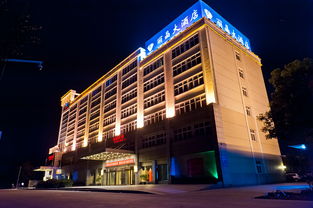酒店员工是客户体验的关键。通过持续的培训,可以提升员工的专业技能和服务意识。建议酒店管理层为员工提供定期的培训课程,涵盖客户服务技巧、沟通技能、问题解决能力等方面。建立员工激励机制,鼓励员工积极参与培训和提升自身能力。
湖州德清酒店作为一家酒店企业,在提供优质服务和提升客户体验方面有着重要的使命。在如今竞争激烈的酒店行业,不断提升服务质量已成为确保酒店业务成功的关键因素之一。以下将从多个方面为湖州德清酒店提出提升服务质量与客户体验的指导建议。
湖州德清酒店要不断提升服务质量,注重客户体验,才能在激烈的市场竞争中脱颖而出,赢得客户的青睐和口碑。
品牌形象是吸引客户的重要因素之一。湖州德清酒店可以通过提升服务质量、优化硬件设施、加强品牌营销等方式来打造良好的品牌形象。建议酒店在各大平台上积极展示自身特色和优势,提升品牌知名度和美誉度。
通过创新服务方式和体验,可以提升客户对酒店的好感度和满意度。例如,可以引入智能科技,提供在线预订、自助入住等服务;设计个性化服务套餐,满足不同客户的需求;打造特色活动和体验,吸引更多客户选择湖州德清酒店。
湖州德清酒店:提升服务质量与客户体验的关键

客户反馈是改善服务质量的重要参考依据。湖州德清酒店可以建立完善的反馈机制,收集客户意见和建议,并及时做出回应和改进。通过积极倾听客户声音,不断优化服务,提升客户满意度。
忠诚客户是酒店业务稳定发展的关键。湖州德清酒店可以建立忠诚客户计划,为经常光顾的客户提供专属优惠和服务。通过建立良好的客户关系,提升客户黏性和忠诚度。
标签: 德清酒店预订 湖州德清县酒店 湖州德清酒店排行 湖州德清酒店管理公司电话 湖州德清酒店电话号码




